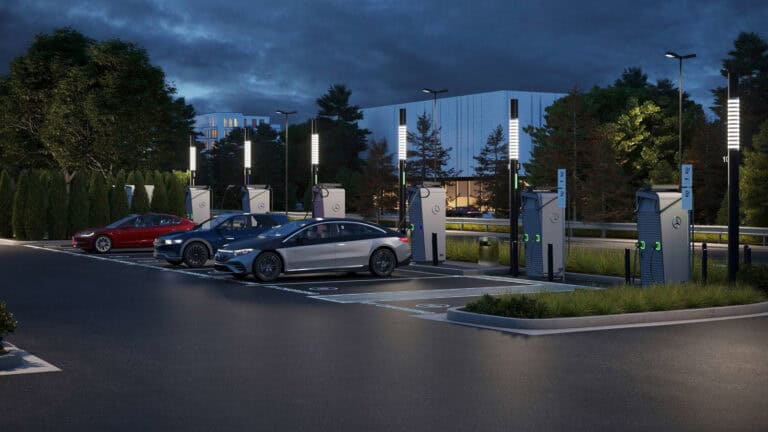Imagine a military jet being refueled in-flight by tanker aircraft— except it’s an EV, it’s on the ground, and everything’s electric.
Common frustrations for current electric vehicle drivers include limited driving range, not enough charging stations, and slow charging times. To combat these woes, engineers at Ford have developed ways for their new F-150 Lightning to charge other EVs in an emergency … but there might be a better way to apply that technology, and some researchers are taking a cue from tanker aircraft being used to refuel jets mid-air to propose a new way for EVs to share charge with each other while driving. (!)
Prabuddha Chakraborty, a PhD candidate in electrical and computer engineering at the University of Florida, has, along with his co-authors, proposed a two-battery system for EVs. First, a large, slow-charging lithium-ion battery would fuel the car, while a smaller, fast-charging battery would be available for on-the-go charging. Once it’s powered up, the smaller battery would be able to transfer its charge to the main battery, saving charging time.
It’s worth noting that, in concept, that idea’s not totally dissimilar from what we’ve already seen from Chevrolet in those patent drawings of its dual-port charging system. Each 400V battery pack acts as that “smaller battery” that then transfers its charge to the 800V system when they “reconnect”.
Chakraborty et al. envision a cloud-based network that would monitor the charge levels of EVs. If one vehicle’s power is starting to run low, the network would be able to alert it to other EVs with enough charge to sell that are nearby. Once the owners consent, then cables would connect the vehicles for charging, and they would be locked at the same speed until the charge transfer is complete.
V2V Charging Could be as Simple as That

Of course, this would only work for so long, as the total charge of the area network would slowly deplete. So the second salvo in their idea is to have mobile charging stations, just like those tanker aircraft, available on the roads and capable of recharging multiple vehicles at once. These mobile stations would also be powered by renewable resources to keep greenhouse gas emissions low.
The team used traffic modeling software to simulate how this on-the-go battery charging system would impact battery range, and they found that it would reduce driver anxiety about charging range, reduce wait times at EV charging stations, and lower EV purchase costs by removing the current need for large batteries.
“We saw a substantial reduction of refueling requirements among electrical vehicles, so that’s promising,” said Tamzidul Hoque, one of the paper’s co-authors and a professor of electrical engineering and computer science at the University of Kansas. “We also did an analysis assuming the mobile charging stations are recharged using renewable energy, and saw a big reduction in carbon emissions.”

SOURCE | IMAGES: ANTHROPOCENE.











